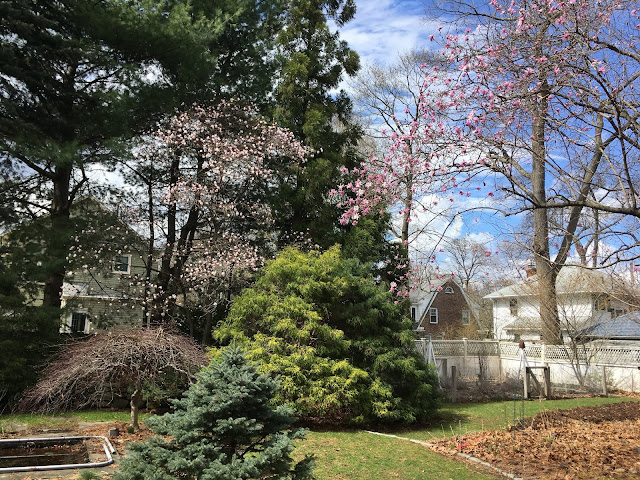 |
| Surviving elms in New York's Central Park |
After all, the maples were tough, adaptable growers that could survive the tight root space, thin, rocky topsoil, and plentiful road salt that our narrow curb strips offered.
In one way, choosing these maples was a success. Almost all our streets are now lined with mature specimens. Over their lifetime they’ve rolled with the punches, putting up with limbs torn off by ice storms and passing trucks, finding water by pushing their roots under the sidewalks into lawns and garden beds, growing around holes gouged in their canopy by pruning around power lines.
 |
| Norway maple street tree-photo Famartin |
The problem with these nonnative trees is that they’re too successful. Each tree produces thousands of viable seeds every spring, packing pairs of them into the helicopter-like samaras that we see twirling to the ground.
 | |
| Winged seed pods of Norway maples |
They lie in cracks in the sidewalk, in garden beds, and on any bare soil or pile of organic debris. It seems as if most of those seeds succeed in producing seedlings the following spring.
This is the time of year when gardeners like me become obsessed with weeding out those seedlings. We know that by next year, this season’s tender little sprout will have grown a woody stem and sent down a deep root. If we don’t catch them this year, they’ll be harder to pull with every passing year.
 |
| One-year-old Norway maple seedling, left, with this year's on right |
When we moved into our house, a dense thicket of Norway maples that soon reached 20 feet high grew behind the back fence, just because our neighbors had left some seedlings alone to grow. The trees make dense shade, their shallow roots crowd out competitors, and they exude allelopathic chemicals that keep other plants from thriving in their vicinity.
 |
| Norway maples shading the backyard in the mid-90s |
Luckily for my garden, we were able to remove those trees. Their relatives have continued to colonize the city, though.
When the Norway maples flower at the end of April, my heart softens toward them, despite my struggle to curb their reproduction. I love the lacy silhouettes the flowers make against the street lights after dark. The rosettes of chartreuse flowers and tiny new leaves are a heartening sight when many trees haven’t yet put out any foliage.
 |
| Norway maple in bloom |
A cloud of yellow-green covers the whole city, reminding me of Robert Frost’s line, “Nature’s first green is gold.”
 |
| Norway maples paint the landscape a vibrant pale green |
In recent years, our city has gotten wise. Where street trees have died or been cut down, our urban forestry director now chooses to plant a range of resilient tree species—but no more Norway maples. Soon we’ll have a diverse mix of street trees that are less inclined toward world domination. Meanwhile, we should remind ourselves when choosing spring-blooming bulbs and shrubs that they’re going to flower against a chartreuse background. Whether we like it or not, those maples won’t disappear anytime soon.
































